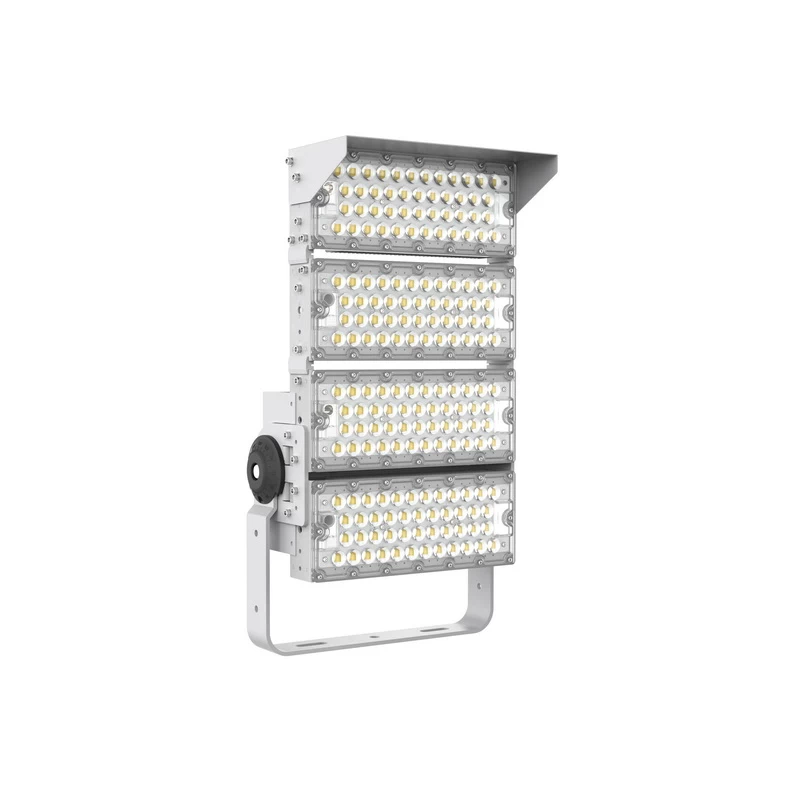LEDライトの仕組み| LEDRHYTHM
LEDライトの仕組み-LEDライトの魔法を解き明かす
あの小さなLED電球が、どうやって私たちの世界を効率よく美しく照らしているのか、不思議に思ったことはありませんか?LED技術の魅力的な世界を深く掘り下げてみよう!
LEDチップの内部構造
マジックの核心は、LEDチップの中心にある半導体のPN接合にある。この接合部こそ、作用が起こる場所なのだ。接合部には空乏層が形成され、自由電子の障壁となる。しかし、外部電圧がPN接合を順方向にバイアスすると、驚くべきことが起こる。電子がN型領域からP型領域に飛び出し、正孔と結合してエネルギーを放出する。このエネルギーは、光子という形で放出される。この発光を可能な限り効率的かつ有用なものにするため、PN接合の材料組成と構造は注意深く作られている。
マルチチップで明るさを構築
LEDランプは単一のチップでできているわけではありません。多くの場合、複数の小さなLEDチップが組み合わさって発光面を形成しています。これにより、全体的な明るさが向上するだけでなく、より均一な配光も実現します。しかし、このチップを光らせるには直流電源が必要です。通常の主電源はAC220Vです。そのため、すべてのLEDランプの内部には、その交流電力をチップが必要とする低電圧の直流電力(通常1~3V程度)に変換するための賢い駆動電源があります。この電源は、安定した信頼性の高いDC電圧出力を保証するために、高度なスイッチング電圧安定化技術を使用しています。
エネルギー効率と暑さへの挑戦
さて、ここでLEDが白熱電球と異なる点がある。LEDは、電気エネルギーを光に変換する効率が非常に高いのだ。白熱電球がエネルギーの大部分を熱として浪費するのに対し、LEDはそのエネルギーのかなりの部分を有用な光に変えることができる。しかし、LEDでさえ、入力エネルギーの20%の熱を発生する。そのため、LEDランプには通常、ヒートシンクやファンなどの放熱装置が装備されている。LEDの長寿命と安定した発光効率を確保するためには、スマートな放熱設計が不可欠です。
LEDライトの動作原理は、主に発光ダイオードの発光原理に基づいている:
1.LEDチップの内部は、P型半導体とN型半導体のPN構造になっている。
2.PN接合の接続部には空乏層が形成され、印加電圧によって電子がN型領域からP型領域に入る。
3.電子と正孔が再結合するとエネルギーを放出し、光子として可視光を放出する。
4.LEDランプの内部では、複数の小型LEDチップが発光面に組み合わされ、明るさと発光効率を向上させている。
5.LED駆動電源は、入力された220Vの交流電力を約1~3Vの低電圧直流電力に変換し、LEDチップに動作電圧を供給する。
6.ヒートシンクやファンなどの熱管理システムは、LEDから発せられる熱を放散し、安定した動作を保証するために使用される。
7.シェル、ランプシェード、その他の部品は、LEDモジュールと電源を固定し、まぶしい強い光を遮断するために使用される。
8.LEDランプの中には、調光や色温度調整などの追加機能を持つものもある。
9.スイッチボタンは、LED電源のオン・オフを制御し、基本的な照明機能を完成させる。
そのため、LEDランプが作動すると、PN接合の発光原理と電子駆動モジュールの制御により、安定した効率的な照明を実現し、従来の白熱灯や蛍光灯に取って代わる。
ベーシックな照明を超えて - 特長とオプション
LEDランプの外殻は、単に見せるためだけのものではありません。内部構造を保護し、すべてを所定の位置に保持する重要な役割を担っています。そして、ランプシェードのような遮光装置も?見た目だけではありません。それは
は、過剰なまぶしさの問題を解決し、よりソフトで快適な光を与えてくれる。LEDランプの中には、周囲の明るさに応じて光量を調整する調光機能で、さらに一歩進んだものもある。
あなたの特定のニーズ。そして、スマートなものもある!モバイルアプリで遠隔操作や設定ができる。
LEDの種類と用途の世界
LEDにはさまざまな種類があります。クリーンで明るい白色光を発する白色LEDは、さまざまな用途に最適です。また、LEDは家庭用だけでなく、信号機にも使われています!LED
ledリズムの製品は最大50,000時間で、コストパフォーマンスと信頼性の高い選択肢となっている。
結論-LEDはいかにして私たちの生活に革命をもたらすか?LEDライトの仕組み
LED照明は、高度な半導体技術、電子技術、スマートな熱管理を統合しています。PN接合の正確な動作と電子ドライブモジュールの制御により、安定した効率的で省エネな光を作り出します。従来の白熱灯に取って代わり、私たちの世界を照らす方法を変えつつあります。
だから、次にLEDライトを点灯してその鮮やかな輝きを楽しむとき、その単純な行為を可能にするためにどれだけの科学と工学が費やされたかを知ることができるだろう!








